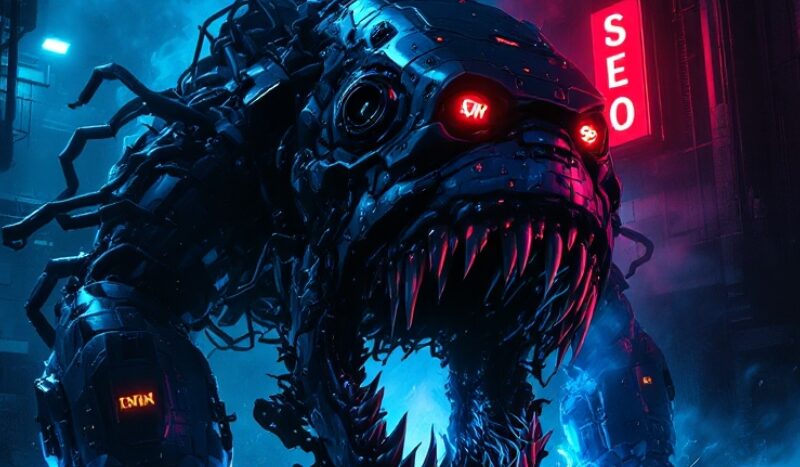Why micro journeys matter more in b2b marketing
Let’s get one thing out of the way: your buyer’s journey is not a linear, three-stage funnel in the modern industrial marketing world.
But in reality, B2B buyers navigate a chaotic web of micro decisions, each with the power to speed up, stall, or completely kill a deal.
And most industrial marketers are not aware of the power of micro journeys. They focus on the big journey: “How do we take someone from unknown to lead to customer?”
But the truth is, growth doesn’t happen in big moments. It happens in small, overlooked ones—the click that doesn’t get tracked, the email that gets ignored, the spec sheet that never gets downloaded.
These are micro journeys—and they’re the difference between noise and influence, between being in the deal or being left off the shortlist entirely.
Let’s unpack what they are, why they matter, and how to include them in your strategy.
What is a micro journey?
A micro journey is a tiny, self-contained user experience that supports a specific question, decision, or next step in the buyer’s world—not yours.
Examples include:
- An engineer clicking through a sizing calculator at 10pm to validate a spec
- A plant manager skimming your YouTube thumbnail for 2.4 seconds to decide if it’s worth watching
- A procurement officer trying (and failing) to find your contact info on mobile
- A facilities director comparing two compressors in your brochure, wondering which supports their airflow needs
- A VP forwarding your FAQ page to the rest of the buying committee before a budget meeting
None of these moments guarantee a lead. But they all shape perception and preference. They build—or break—trust. And they determine whether a buyer moves one step closer to you or chooses a competitor.
Micro journeys are the breadcrumbs of the full journey. Ignore them, and you’re just building campaigns. Optimize them, and you’re engineering influence.
Micro journeys are how trust is actually built
Trust doesn’t come from brand videos or campaigns. It comes from consistency across small touchpoints.
Let’s say your prospect clicks a blog post. If it loads slowly, feels vague, or ends with a weak CTA, they’re gone. That’s a broken micro journey.
Let’s say they watch your product demo. If it’s two minutes too long, or the audio’s bad, or it doesn’t answer their real questions—that’s a missed opportunity.
Micro journeys are your marketing reputation in motion. They tell your buyer:
- Can you solve my problem?
- Do you understand my world?
- Are you worth bringing into the conversation?
One bad experience doesn’t just hurt UX—it chips away at credibility. And B2B buyers don’t forget that.
Where micro journeys live in industrial B2B marketing
You don’t need a SaaS funnel to care about UX. In industrial manufacturing, micro journeys happen everywhere:
1. Your product pages
Does the content explain things clearly? Are diagrams easy to read on mobile? Can someone get dimensions, specs, certifications, and support materials within two clicks?
2. Your quote process
If your form is 15 fields long and takes five minutes to complete, guess what happens? They bail. Especially if they’re early-stage and just comparing.
3. Your video thumbnails
If they’re low-effort screenshots, they won’t get clicked. If the video is just a 6-minute monologue, it won’t get finished. Micro journey failed.
4. Your resource center
Does it make sense to anyone outside your marketing team? Can users filter by problem, role, or equipment type? Or is it a digital dumping ground?
5. Your social links
Clicking “Learn More” from a LinkedIn post—do they land in a relevant place? Or a homepage they’ve already seen?
Every one of these is a moment to lose—or gain—momentum. Each experience needs to build upon the prior experience. Buyers want new content, you have to think about what the
How to design for micro journeys
This isn’t just a UX task. It’s a B2B marketing slam dunk.
Here’s how to start building around micro journeys:
1. Stop assuming attention—design for scanning
Most B2B buyers skim. So stop writing 400 words before getting to the point. Use clear headlines, short paragraphs, and visuals that explain fast. Especially in technical content.
2. One page, one purpose
Each page or asset should solve one problem or answer one question. Don’t bury a case study link in the middle of a product overview. If a buyer wants comparisons, give them comparisons. If they want proof, give them proof.
3. Build content for outcomes, not stages
Instead of asking “What stage is this buyer in?”, ask “What question are they trying to answer in this moment?” Then build around that. Could be specs. Could be ‘will this fit in my facility?’ Could be ‘who else is using this?’
4. Track behavior beyond the CTA
Heatmaps. Bounce rates. Exit pages. These are signals that tell you where a micro journey is broken. If users always abandon halfway through your blog, that’s not a content problem—it’s an experience problem.
5. Kill the dead ends
If someone watches a video or reads a blog, what happens next? Is there a recommended resource? A clear action? Or do they hit a wall? Every micro journey should have a thoughtful next step, even if it’s not a form.
The ROI of getting it right
Let’s say your video page goes from a 20% engagement rate to 40%—because you updated the headline, added chapter markers, and embedded a next-step CTA.
Now imagine 1,000 buyers hit that page every quarter.
You’ve just doubled the value of that asset—without running a single campaign. That’s the power of micro journeys.
They compound. Quietly. Predictably. And when you stack enough of them together, your entire marketing engine gets faster, clearer, and more trusted.
No new tech required. Just better design. Better messaging. And better empathy for how people actually buy.
Final Thoughts: the case for slowing down
In a world obsessed with scale, speed, and automation, micro journeys are a call to slow down.
To stop shouting into the void and start thinking like a buyer. To obsess not over the funnel, but over the next step someone takes after encountering your brand.
That’s how demand is built. That’s how trust is earned. And that’s how modern industrial marketers differentiate—not with more content, but with better experiences.
A smart B2B marketing agency can help you identify these micro moments, optimize them for behavior, and turn your scattered digital touchpoints into a cohesive system that supports buying—not just marketing goals.
Because in B2B, it’s not the loudest brand that wins. It’s the one that makes the buyer feel, in every small interaction: these people get it. And that’s the kind of journey worth building.





